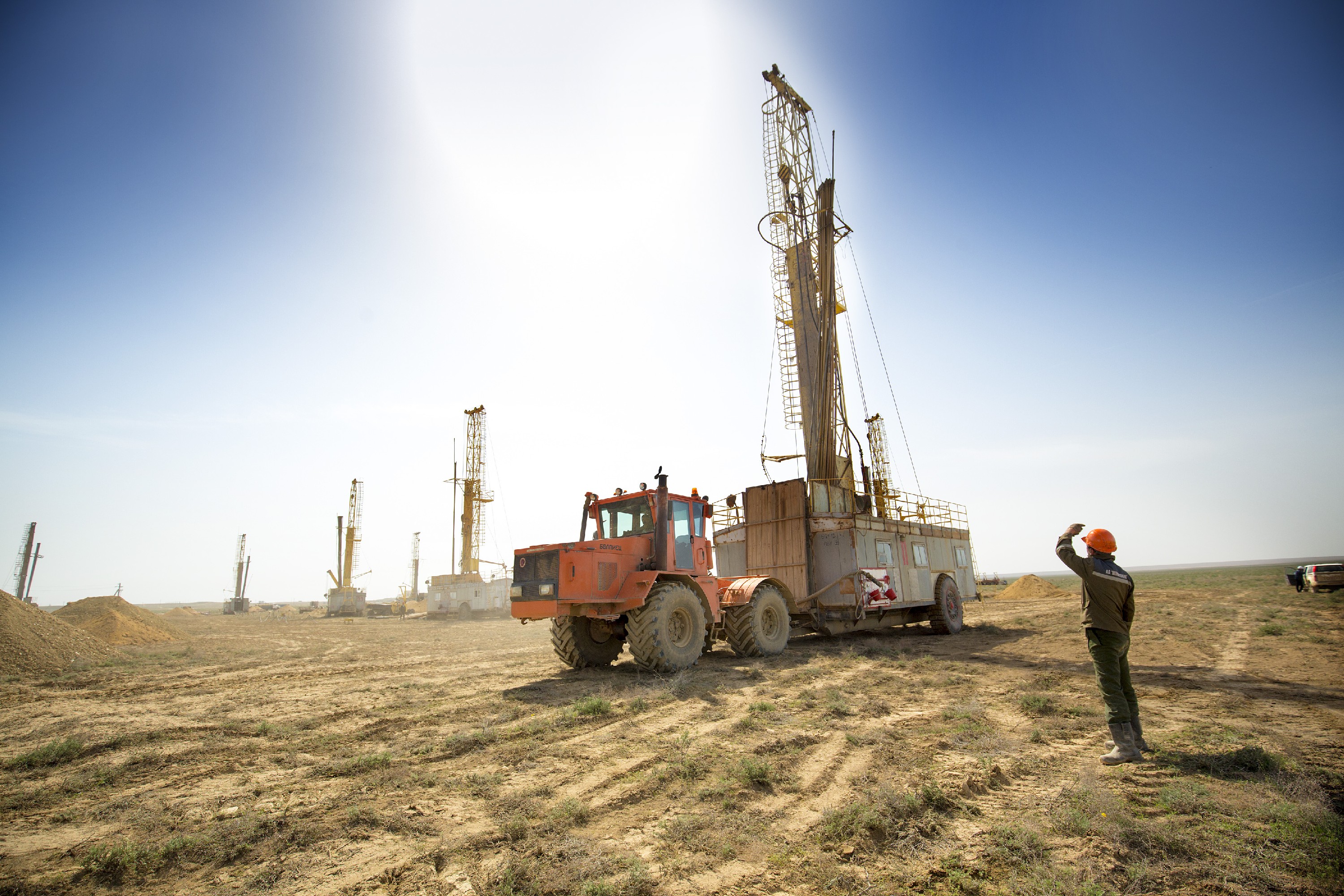
Nuclear Responds to Coronavirus
back to contents*Information provided in this article is relevant for April 16, 2020.
Uranium and fuel market
In March and early April, large uranium manufacturers announced their production plans against the coronavirus pandemic.
Kazatomprom, Kazakhstan manufacturer, which accounted for over 42 % of U3O8 produced globally in 2019, said on April 7 that the output of uranium would decline 18 % year-on-year on the back of staff reduction. Lower staff numbers will be maintained for the next three months. “The company expects its uranium production to decrease by more than 4,000 tons in 2020,” Kazatomprom’s press release read. According to earlier estimates, Kazakhstan was expected to produce 22,750–22,800 tons of uranium.
Canada-based Cameco said turn that it might produce up to 600,000 pounds (around 272 tons) of U3O8 less. Inkai in Kazakhstan remains the company’s last mine in operation. Earlier Cameco announced that its Cigar Lake uranium mine, the largest in the world (6,900 tons of uranium in 2019) and Cameco’s only operating mine in Canada, was placed into care and maintenance for at least four weeks. In April, Cameco extended the conservation of the mine for an indefinite period, with its lift depending on the epidemiological situation and the instructions of the regulator.

In early April, Cameco also announced that it suspended production at its Port Hope Conversion Facility for about four weeks. The company plans to use the time of shutdown to carry out repairs planned for the coming summer.
Following the shutdown of Cigar Lake, Orano (France) announced the suspension of production at McClean Lake Plant, which processes uranium ore from Cigar Lake, first for the same four weeks, and then for an indefinite period.
The Government of Namibia imposed a quarantine in the regions of Khomas and Erongo for the period from March 27 until May 4. According to Minister of Mines and Energy Tom Alweendo, they had to suspend production at local uranium mines. In particular, the quarantine affected operations of the Rössing Uranium Mine and the Husab Mine located in Erongo. In 2019, the two mines produced around 6,000 tons of uranium. “As from March 28, 2020 the Rössing Uranium Mine will discontinue normal mining operations and enter a period of minimal mining operations. As a safety measure, critical maintenance work will continue,” the corporate website read.
Energy Resources of Australia Ltd (ERA), which operates the Ranger mine (2,000 tons in 2019), announced it would not transport workers from the city of Darwin to the mine until requirements of the Human Biosecurity Emergency Declaration of the Australian Government were met. At present, the company is holding negotiations with stakeholders to maintain the production and other operations as part of the mine rehabilitation program.
Russia’s ARMZ Uranium Holding did not suspend its operations, but some of the employees, whose jobs were not critical for the production process, shifted to remote working. Starting from mid-April, they are returning to their onsite workplaces. “We take all reasonable measures to minimize the effects of the epidemic on our supply chains and meet our obligations to customers in full and on time — exactly as provided for in the contracts. For now, ARMZ continues operating as usual,” an ARMZ spokesperson said.
With many mines mothballed, American uranium producers try to take advantage of the situation. Energy Fuels and Ur-Energy, which describe themselves as ‘small businesses’, wrote a letter to the US president in an attempt to portray the situation with uranium supplies as critical, “This current pandemic crisis is exposing the vulnerability of our nuclear fuel supply chain,” the letter read. The goal is to secure the government support by invoking the Defense Production Act, which offers a variety of support measures, including direct purchases from domestic manufacturers.
It is unlikely that the US companies concerns are grounded in market reality. Take Kazatomprom’s press release published in March, for example. The company assured that even “if the situation affects uranium mining or delivery, our inventories (products and materials available on stock) are sufficient for Kazatomprom to continue production and meet contract obligations.” According to the company data as of December 31, 2019, Kazatomprom had over 8,500 tons of uranium in stock, which is roughly equal to its eight-month output in 2020 (in proportion to the ownership share). These figures might indicate that the uranium market remains oversupplied.

Inoperative uranium mines have not yet affected the market seriously. According to UxC data as of March 30, 2020, the spot price of uranium rose from USD 24.80 to USD 27.62 per pound of U3O8 over the previous month. The growth was not consistent, though. On the next day, the price went down to USD 27.25 and recovered to only USD 27.70 per pound during the first three days of April. Kazatomprom’s statement pushed the price further up, but just a little: the possibility of the market missing ‘up to 4,000 tons of uranium’ raised the price by little more than one dollar to USD 28.88.
Then the price continued to rise: the April statement made by Cameco to extend the conservation of Cigar Lake for an undefined period raised the price from USD 29.75 (transactions on April 13) to USD 31.38 per pound (transactions on April 14).
The situation is paradoxical: according to March data from UxC, the largest buyer in the spot market is Cameco. For several years, the company has been producing less than selling. In 2019, domestic production was 9 million pounds of nitrous oxide (only Cigar Lake is included here), and sales were 31.5 million pounds. And if Cigar Lake is stopped, the volume of purchases is likely to increase.
In these circumstances, a rise in spot prices for a Canadian company is a growth of expenses that is unprofitable for the company itself.
“We are sure today that the shutdown of uranium mines in 2020 will sweep away some of the stocked uranium, which puts pressure on the price,” Anna Bryndza, Senior Vice President Policy at leading uranium research and analysis company UxC, told Interfax.
This sentiment is shared by Andrey Tovstenko, the first Deputy Director General of TENEX, Rosatom company dealing in nuclear fuel cycle products. He noted that due to restrictions related to the spread of COVID‑19, production of uranium raw materials was reduced. “The suspension of production at the world’s largest uranium mine, Cigar Lake, for an indefinite period and similar restrictions imposed on mines in Namibia and Kazakhstan, led to an increase in spot prices for natural uranium over the past month by more than 25 %. In April 14, the spot price surpassed the psychologically important level of 30 USD per pound of nitrous oxide. I believe that the price dynamics in the coming months will strongly depend on the duration of the restrictions imposed due to COVID‑19,” Andrey Tovstenko said.
However, the question remains how much will the production decrease. Resuming production at the idle mines is a matter of several months — which is enough to return to previous production levels and even compensate for the temporary shortfall. This point is stressed in Kazatomprom’s press release saying that they could only provide estimates at this point. The resulting production cuts might be lower than one would expect based on the average output and days in shutdown or reduced production. It is impossible to make forecasts for 2020 as it is not yet clear how the pandemic will unfold.
Nuclear generation
Nuclear power plants around the world have not been shut down over the epidemic as they belong to infrastructural facilities ensuring stable work of businesses and comfortable life of people. In order to minimize health risks for their staff, nuclear operators in many countries asked their non-critical employees to work from home. The remaining workers have their temperature taken regularly and the rooms are disinfected.

“All nuclear power plants and other facilities work properly,” Rosatom’s Director General Alexey Likhachev said.
In order to ensure continuous operation of nuclear power plants in Russia, control room operators were provided accommodation at countryside health resorts belonging to the plants. They are being transported to work in buses that are disinfected before each ride, and enter the station through a separate gate. The surfaces inside the control room are cleaned and disinfected several times a day. Everyone wears masks. Employees from different shifts do not meet in canteen, which is also disinfected after each shift. Meals are cooked at the health resort and delivered to the plant in lunch boxes. Deliveries are contactless: canteen workers take boxes only after the delivery service leaves the site.
ČEZ (Czech Republic) also isolates shifts at the Dukovany and Temelin nuclear power plants.
Refueling and repairs might pose a challenge for nuclear operators. These operations are obligatory and cannot be postponed. Things might get complicated if the number of employees has been reduced or if any of them has contracted the virus.
For example, the authorities of Montgomery County (Philadelphia, USA), which is home to the Limerick Generating Station, has requested its owner Exelon, to postpone refueling operations involving 1,400 people, due to coronavirus. The company refused saying that it would be otherwise unable to meet demand for electricity at summer peak times. Exelon had bad luck: one of its employees engaged in refueling operations fell ill and was tested positive for coronavirus. The company stepped up health protection measures and continued its operations despite criticism.
Arizona Public Service, operator of the Palo Verde Nuclear Generating Station in Arizona, has decided to cut the number of people who had to do maintenance work during refueling. The company has limited the scope of maintenance making sure it will run safely until the next shutdown in September 2020.
There could be more complications in the near future as according to the US-based Nuclear Energy Institute (NEI), the share of people in self-isolation may reach 40 % within the next one or two months.
Slovakia’s Slovenske Elektrarne extended shifts and reduced the number of employees working at the Mochovce nuclear station to mitigate the risk of infection spread. With fewer workers on the site, the company had also to decrease the scope of work done during the shutdown of Unit 1. It will carry out maintenance on the core cooling system and transformer substations only. Non-destructive testing of wields at one of the six steam generators and overhaul of one primary coolant pump are also on the agenda. Some of the initial capital investment programs have been suspended, but the long-term seismic reinforcement project at the nuclear power plant continues as planned. The scope of work was approved by the Slovak Nuclear Regulatory Authority.

In Canada, the Bruce Nuclear Generating Station in Canada reduced its Major Component Replacement Project to several key tasks for the station to be able to continue power generation and fabrication of Co‑60 for medical purposes.
The Bilibino nuclear power plant in Russia completed partial refueling, which took place on March 20–30. On April 5 — one day ahead of schedule — Unit 2 was brought online. According to the plant’s press service, they did not have to reduce the initial scope of work or the number of employees involved.
The situation is different at nuclear stations under construction. The number of employees at the Hinkley Point construction site in the UK decreased twofold, and the work slowed down.
Some workers have asked to be returned back to Russia from Rosatom’s construction sites abroad. On April 6, 178 employees and subcontractors engaged at the Rooppur NPP returned to Russia from Bangladesh. Their departure will not affect the construction process as there are more than 4,000 people working on site. “Our construction projects abroad are running as scheduled. For the time being, we see no major risks preventing us from meeting our plans for this year. Unfortunately, we could not predict how the situation will develop in a particular country,” Rosatom’s Director General Alexey Likhachev said.

Some nuclear facilities, which are not involved in the power generation, might suspend their operations. After the first cases of coronavirus were detected at the Magnox Reprocessing Plant in Cumbria (England), around 8 % of 11,500 employees self-isolated. In response to the infection, its owner Sellafield Ltd decided to begin controlled shutdown of the plant.
This article was not meant to assess the impact of the pandemic on power consumption across the globe. In March 2020, electricity production in Russia decreased 1.8 % year-on-year, while consumption declined 1.6 % over the same period. However, this decline cannot be directly attributed to the pandemic as Russia did not feel its effects until the last week of March. Much of the decline could be explained by warmer weather.
Since many businesses were ordered by the authorities to close for the period of the coronavirus epidemic and some people and companies lost their sources of income, the nuclear power plants as electricity producers are facing lost profits.
Energy companies have already begun publishing information about changes in payment procedures. For example, Électricité de France announced that small and micro businesses severely affected by the crisis were allowed to delay the payment of their commercial electricity bills. This applies to the bills due from March 12 until the end of the emergency situation. Companies receiving aid from the Government’s Solidarity Fund can pay their bills in installments within six months after the emergency is over.
Atomenergosbyt (Rosatom’s power distribution company operating in four Russian regions) is ready to consider the circumstances of individual customers. “We see that some consumers are already trying to use the current situation in order not to pay their [existing, pre-pandemic] debts. We find that unacceptable. Electricity consumers must fulfill their existing obligations in full. It is important to prevent debt from growing in order to maintain the existing balance in the energy market — energy companies need money to purchase fuel and carry out repairs otherwise the security of energy supply will be threatened,” a representative of the company said.

Fighting coronavirus
On April 1, the IAEA announced it was dispatching the first batch of testing equipment for rapid coronavirus detection to more than 40 countries. The equipment includes diagnostic machines and kits, reagents and laboratory consumables, personal protective equipment, and laboratory cabinets for the safe analysis of collected samples. Over 90 countries have sent support requests to the agency. The testing technique uses radioactive isotope markers to detect virus’ genetic material.
The IAEA is using its own resources as well as extrabudgetary funding for its emergency assistance. Large financial contributions have been announced by Russia, the United States, Canada, the Netherlands, Australia and China, which has donated detection equipment, kits, reagents and other medical materials worth USD 2 million.
China Nuclear Energy Industry Corporation (a subsidiary of CNNC) has purchased medical materials and is planning to send them to Iran, South Korea, Japan, Spain, France, Austria and the United Kingdom.
Since Rosatom’s activities are not limited to nuclear power generation, the Russian state nuclear corporation has developed a number of products and services to help fighting the pandemic.
The Troitsk Institute for Innovation and Fusion Research (a subsidiary of Rosatom’s research division) has developed mobile ozone generators to disinfect clothes and equipment. The device is comparable with a home ozonizer in its size. In order to disinfect clothes or tools, it is enough to place the ozone generator in the room where the items are stored. They will be sterile in just 15 minutes. One ozone generator can treat an area of up to 100 square meters.
Rusatom Additive Technologies (Rosatom’s integrator for 3D printing techniques and services) announced that the company was ready to manufacture valves for artificial lung ventilation devices and had produced the first valve samples.
Sterion, a joint venture of Rusatom Healthcare and a private investor, provides 24/7 mask sterilization services. By April 2, the company has treated the first batch of 92,000 masks, with its design capacity reaching up to 10 million masks per week. The company is based at Rosatom’s Research Institute of Instrumentation and uses a linear particle accelerator developed at Rosatom’s Efremov Research Institute for irradiation.
Given the input of nuclear industry companies in fighting the pandemic, certain statements made by international organizations like the International Energy Agency seem quite puzzling, “Large-scale investment to boost the development, deployment and integration of clean energy technologies — such as solar, wind, hydrogen, batteries and carbon capture (CCUS) — should be a central part of governments’ plans.” Nuclear power plants coupled with desalination facilities or nuclear science and technology centers with agriculture irradiation facilities and medical isotope fabrication reactors could be more than just a source of electric power at a stable price. Countries owning such facilities could educate young talents and train industry professionals, as well as provide people with safe medical products, water and food.

Thankfully, individual countries see the importance of nuclear technologies. Speaking to Teol.hu, János Süli, Hungarian Minister in charge of the Paks nuclear power plant expansion, confirmed that Hungary considered the two new units at Paks II to be strategically important for the country. A domestic source of power and a stock of fuel for continuous power generation are essential for the country amidst closed borders and possible import restrictions. Nuclear energy meets a third of Hungary’s needs for electricity. In addition, construction of a nuclear power plant means creation of many new jobs. “Large capital investment projects such as construction of two new reactor units might become a lifeline for many Hungarian companies and a source of living for many Hungarians,” the minister stressed.
Finally, today’s utmost priority is to maintain lives, health and, as far as possible, incomes of people.
Photo: Inkai uranium miner, Kazakhstan
Inkai uranium miner, Kazakhstan
Social distancing measures put in place at Hinkley Point NPP, UK
Temperature checks put in place to keep workers safe during the coronavirus pandemic, Hinkley Point NPP (UK)
Inkai uranium miner, Kazakhstan
Rosatom is ready to manufacture valves for ventilators needed to fight coronavirus




